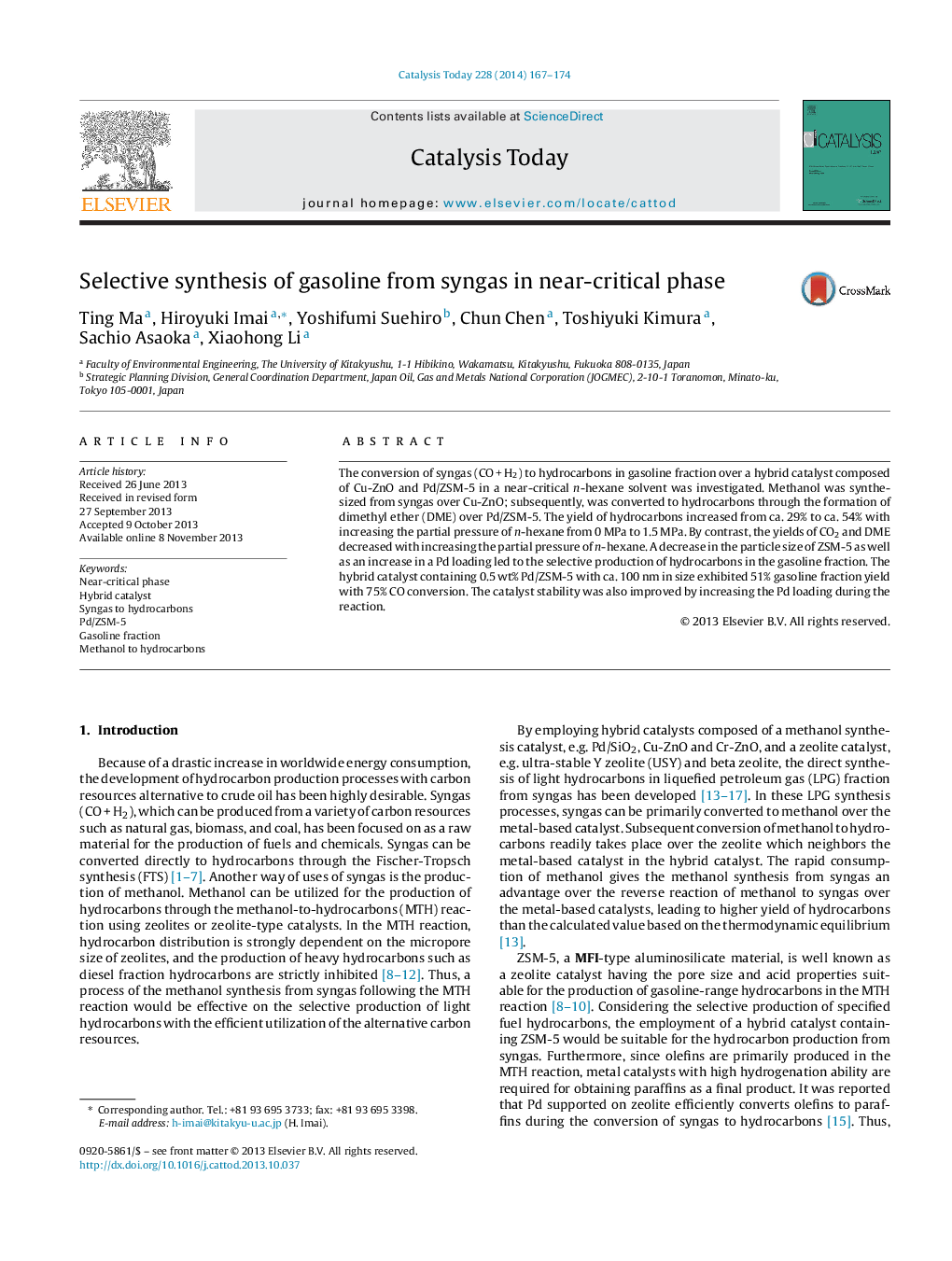| Article ID | Journal | Published Year | Pages | File Type |
|---|---|---|---|---|
| 54141 | Catalysis Today | 2014 | 8 Pages |
•Syngas was efficiently converted to hydrocarbons via MeOH in near-critical fluid.•A hybrid catalyst was composed of Cu-ZnO and Pd supported on ZSM-5.•The hybrid catalyst selectively produced gasoline-range hydrocarbons from syngas.•Nanosized ZSM-5 selectively produced gasoline-range hydrocarbons.•Increasing Pd content led to the improvement in the stability of the catalyst.
The conversion of syngas (CO + H2) to hydrocarbons in gasoline fraction over a hybrid catalyst composed of Cu-ZnO and Pd/ZSM-5 in a near-critical n-hexane solvent was investigated. Methanol was synthesized from syngas over Cu-ZnO; subsequently, was converted to hydrocarbons through the formation of dimethyl ether (DME) over Pd/ZSM-5. The yield of hydrocarbons increased from ca. 29% to ca. 54% with increasing the partial pressure of n-hexane from 0 MPa to 1.5 MPa. By contrast, the yields of CO2 and DME decreased with increasing the partial pressure of n-hexane. A decrease in the particle size of ZSM-5 as well as an increase in a Pd loading led to the selective production of hydrocarbons in the gasoline fraction. The hybrid catalyst containing 0.5 wt% Pd/ZSM-5 with ca. 100 nm in size exhibited 51% gasoline fraction yield with 75% CO conversion. The catalyst stability was also improved by increasing the Pd loading during the reaction.
Graphical abstractFigure optionsDownload full-size imageDownload high-quality image (180 K)Download as PowerPoint slide
